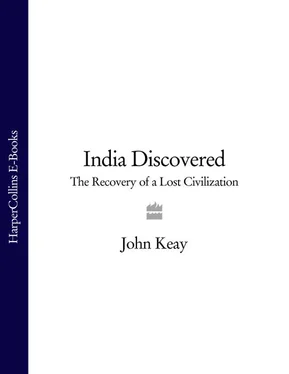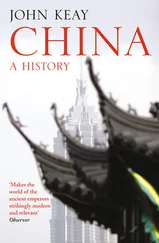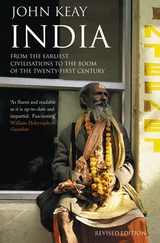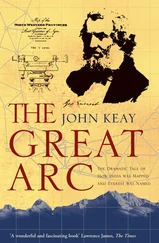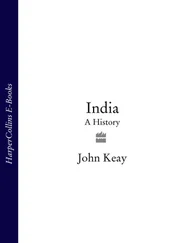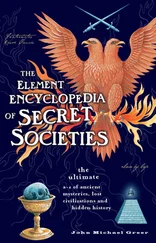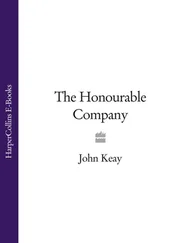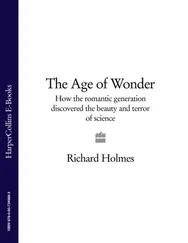In tracing this process, I have tried to convey something of the wonder of each new discovery and the excitement of each new deduction. The men who stumbled upon sites like the temple complex of Khajuraho or the painted caves of Ajanta, felt as if they had suddenly come upon the Uffizi swathed in creepers, swarming with bats and unvisited for a thousand years. It is not hard to understand their astonishment. Parts of India are still littered with monuments and ruins that have never attracted the attention of conservationists. Herdsmen bivouac in royal palaces, mirror-work mosaics crunch underfoot, and bees’ nests hang from painted ceilings. It is one of India’s perhaps ironic glories that, in addition to the more popular and spectacular sites, she still has real ruins, untended, still crumbling, still succumbing to the rains and the vegetation.
The discovery of these varied and magnificent monuments stimulated curiosity about India’s past. It is hard to appreciate now that as late as the end of the eighteenth century nothing whatsoever was known of Indian history prior to the Mohammedan invasions. ‘It is at this epoch [AD 1000]’, wrote Thomas Twining in 1790, ‘that we come to a line of shade beyond which no object is distinctly discernible. What treasures might not be discovered if the light of science should ever penetrate this darkness.’ To Twining, Indian history was like some deep Aladdin’s cave. The outer chambers were well lit thanks to recent Mohammedan chroniclers, but beyond them the cave was in darkness. How far back it went no one could tell. There was just one uncertain clue – the invasion of Alexander the Great in 326 BC. By exploring every possible source, and by combining guesswork with some brilliant deduction, the orientalists successfully penetrated this darkness. The excitement when, deep in the gloom, some new light was shed, was tremendous. But much remained in the gloom; whole centuries defied illumination.
For all the excitement and the very considerable achievements, Indian history is still far from complete. There are almost no ancient historical works to provide a framework, no chronologies to provide the dates and, above all, no contemporary chronicles to provide the detail. It is devoid of almost everything that traditionally makes history palatable for the general reader. There are no anecdotes, no scandals, no well-documented campaigns and no personalities. A chronological approach soon becomes an incredibly confusing list of dynasties and kings, reigning in obscurity, to whom neither reliable dates nor defined kingdoms can be attributed.
To some extent the same goes for Indian art and architecture. The artists, builders and sculptors are mostly anonymous and so, in many cases, are their patrons. We know little about how they worked and nothing of the problems they encountered. In Indian painting, for example, there is a near hiatus of some 1000 years which makes any discussion of the subject highly conjectural.
In this book I have concentrated more on the historians than the history, more on the Indologists than India. The careers of men like Sir William Jones, James Prinsep, Sir Alexander Cunningham, James Fergusson – and many more – reveal almost as much about British India as about the centuries that preceded it. Moreover, the problems and prejudices they had to surmount in coming to terms with a very alien art and culture are the same as those that any non-Indian unfamiliar with the subject has still to face. The story of the pioneers makes an excellent guidebook to an understanding of India.
To appreciate this story it is not necessary to be in sympathy with the British raj. The government’s role in it was the usual one of too little too late. It was a constant source of shame that, whereas other European governments generously supported research on Indian subjects, the British authorities displayed little interest. The field was left to individual initiative. The men who took up the challenge were no more enlightened or liberal in their attitudes than other British officials of the day. Some were deeply respectful of all things Indian. They criticized government policy and were themselves pilloried as ‘Brahminized’. Others, perhaps the majority, regarded contemporary Indians as quite unworthy of their glorious heritage. Either they attributed all that was finest in Indian culture to outside influences, or they portrayed Indian history as one of steady decline towards cultural bankruptcy and moral degeneracy.
This story would not be complete without also including those servants of empire who, acting often out of the worthiest of motives, were nothing short of iconoclasts and vandals. The damage wrought on India’s fortresses by British cannon was surpassed by that caused by British officers in their search for suitable barracks. And there were engineers whose appetite for in-fill for their dams and railway embankments resulted in some of the most tragic archaeological depredations. Even the zoologists were sometimes sportsmen who could see no contradiction in studying India’s wildlife and contributing towards its gradual extinction.
But none of this need detract from the achievement. (The vandals were eventually stopped; even the government was brought to some awareness of its responsibilities.) The products of British scholarship deserve to stand alongside those more commonly cited legacies of the raj – the railways, the judiciary and civil service, democracy. In any large library, India requires a quite disproportionate length of shelf space (in the London Library nearly five times that of China). To work, or just to walk, along those groaning shelves is a stimulating experience. Take away the travelogues and memoirs, the political commentaries and the official papers, and the shelves are still crammed – 200-odd volumes on archaeology, a similar number on the work of the surveyors, nearly fifty concerned purely with ancient inscriptions. Here surely is an aspect of the raj of which an Englishman can be proud without reservation, a unique salute by a conquering power to an older, nobler and more enduring civilization.
CHAPTER ONE This Wonderful Country
On 1 September 1783 the Crocodile , five months out of Portsmouth, struck sail and anchored off Madras. On board Sir William and Lady Jones eyed with concern the wall of spray where the rollers of the Indian Ocean crashed onto the offshore reefs. With the other passengers – the ladies in voluminous, rustling gowns and the men all cocked hats and swords, silk stockings and buckled shoes – they trooped into wooden cages and were lowered over the side. Below, an armada of canoes and catamarans manoeuvred for custom; duckings were commonplace, drownings not unusual.
The first glimpse of India, in the shape of the boatmen, was also less than reassuring. They ‘wear no sort of covering but a small piece of rag, not entirely hiding their members’, wrote William Hickey, ‘a very awkward exhibition this for modest girls on their first arrival.’ The brown bodies glistened with the spray and rippled with each stroke of the paddle. And – an early lesson in the nature of British rule in India—these stalwarts had the fine ladies and gentlemen entirely in their power: safely through the foaming breakers, each passenger had to embrace one of those hard brown torsoes for a piggyback through the shallows.
Arriving in Madras was not a dignified business. But on the beach, a parade of well-dressed gentlemen and handsome carriages awaited the new arrivals. Behind, the city shone in the sunshine, white and neoclassical amidst the waving palms, ‘rather resembling the images that float in the imagination after reading The Arabian Nights’. This at last was India, home for months or years to come, a place where a gentleman could live like a lord and simultaneously amass a fortune.
Читать дальше
